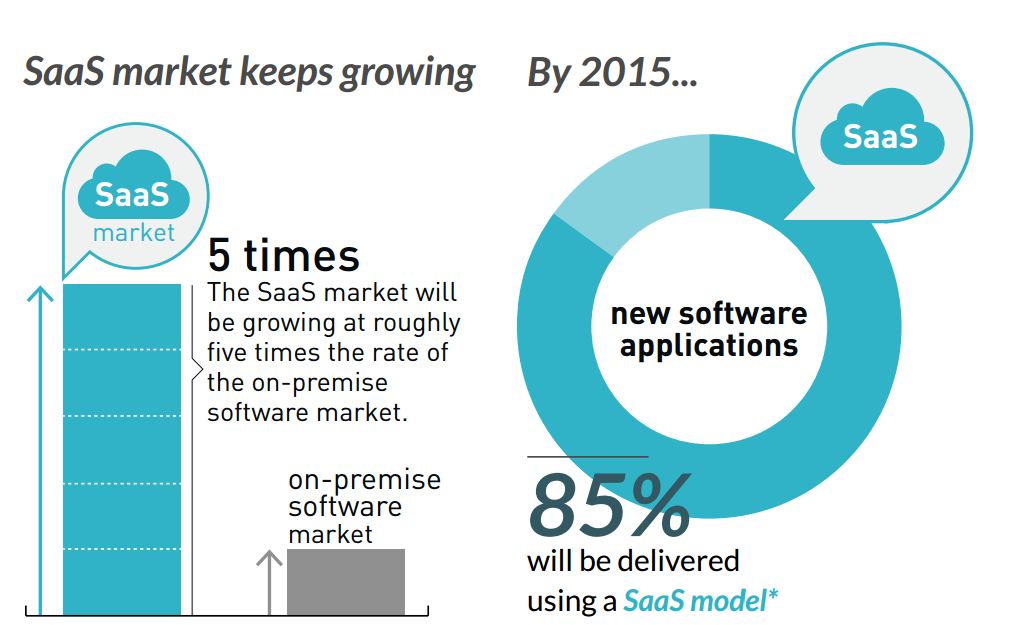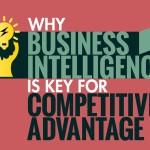It’s perhaps unsurprising that SaaS (software as a service) has now become the tool of the sole trader and the champion of the SME. No longer is it a reserve of the multinational nor the media tech startup; there’s something for everyone with SaaS. Ours is a culture that has largely embraced the time and money we can save from using an app, both professionally and in our personal lives; from selling your product online to booking the cheapest cab in your area. It’s no wonder then, that SaaS has filtered through to smaller enterprises and is revolutionizing the way they do business too.
The most popular applications that businesses are now investing in are the ones that facilitate email, calendaring and human resources processes. Other notable services are CRM (customer relationship management) and collaboration applications. And why is this great news from growing businesses and SMEs? Because making full use of SaaS options will reduce the cost of providing both front- and back-office services. For a business that wants to stay small and personal, this can save you from employing more bodies and from delegating untrained staff to partially administer tasks such as performance management, billing, CRM and task management. Let’s take a closer look at what companies want from their SaaS.
Email and Calendaring
These functions came out top in a recent survey of businesses using SaaS. Not surprising really, given that these are extensions of the apps and programs we use in our daily life; even the least technological businesses will probably use email to communicate with its staff and customers these days. Calendaring functions are great news for small and growing businesses where meetings aren’t held frequently, or if your workforce is made up of flexi-timers and telecommuters. When everybody has access to a personal and a public calendar, everyone will be in the loop as to what is happening and when – from social events and birthdays to deadlines, monthly and weekly objectives and training days. This doesn’t just ensure that your team sings from the same hymn sheet, working from a centralized calendar unites a team and can help to boost morale. Planned staff absences that other employees don’t know about, for example, can be damaging to productivity if a team is caught on the back foot. Get it all in the calendar and encourage your team to collaborate through it.
Human Resources
Good HR is something that can suffer in a SME with a small workforce, especially during busy periods. It can be difficult when starting a business yourself to stop and take the time out to implement HR processes for the present and for the future, but with HR software you can get your important policies up and running speedily and professionally. Good HR software packages will help you to write employment contracts and share them in the cloud, as well as giving you the tools to oversee and manage staff absence, recruitment and training, and performance management cycles. These applications will enable you to create, update and circulate documents, from your health and safety policy to leave of absence forms, securely and instantly. With a small team it can be especially easy to let the management of your greatest assets – your people – slip down that list of priorities. Don’t let this happen; use a time-saving HR program and encourage your staff to collaborate and communicate through it. Nothing beats face-time when it comes to improving staff morale and reinforcing sense of purpose, but HR software will offer you on-demand insights and overviews that would be impossible to maintain when you’re right in the thick of it.
A One-Stop Shop
As SMEs continue to embrace the culture of on-demand software – and as the SaaS market continues to diversify – complete package programs are becoming more and more popular than programs that deal only with one or two functions. Paying the monthly subscription normally attached to a SaaS package doesn’t seem to be discouraging anyone either. Frank Scavo of Constellation Research thinks that this is because “subscription pricing… turns software from a capital expenditure to an operating expense, which for some companies provides a more favourable tax treatment.”
So the complete ‘suite’ of applications appears to be the way forward for SMEs who don’t want to spend the time or the money on dealing with several separate providers and the fees they charge. Also popular are bespoke packages that take into account the functions you need, the tools that’ll just get in the way, and the programs you already use that can be integrated.
Written by James Sheehan of Cezanne Software.















